Ecogate Gates Selection Overview and Best Practice Installation
- David
- Sep 9
- 11 min read
Selecting the correct gate is one of the most important steps in designing a reliable Ecogate On-Demand Control System. Gates control airflow at each workstation, and their body style, motor type, and installation directly influence energy savings, dust transport, and long-term system performance.
This article provides a structured guide to Ecogate gate options, including rotating blade and butterfly styles, Standard, Smart, Standalone, and Precision Airflow motors, and material choices for different industries. It also explains best practices for installation—such as orientation, spacing, and support—to prevent issues like jamming or dust buildup.
By the end, you’ll know how to select the right gate for your application, apply correct installation methods, and ensure your Ecogate system delivers reliable performance with minimal maintenance.
Ecogate's Automatic Blast Gates Options
Ecogate gates have been a leading solution in industrial exhaust ventilation for over 25 years, with more than forty thousand units sold worldwide. They are recognized as the most robust and advanced automatic blast gates available.
Gates equipped with a Smart Motor include a processor board that communicates over the industry standard Modbus protocol and reports pressure, air velocity, and air volume at the gate. This transforms each gate into both a control point and a measurement node within the ventilation system.

Rotating blade Ecogate gates are available from 4 in to 26 in (4, 5, 6, 7, 8, 9, 10, 12, 14, 16, 18, 20, 22, 24, 26, 120 mm, 140 mm, 160 mm)]
Ecogate also offers Precision Airflow Motors, which provide blade position adjustment from fully closed to fully open in one percent increments. These motors can be paired with either butterfly or rotating blade gates and are designed for applications requiring fine airflow regulation.

Ecogate Butterfly Gates are available from 2 in to 26 in (2, 3, 4, 5, 6, 7, 8, 9, 10, 12, 14, 16, 18, 20, 22, 24, 26)]
In most systems, Ecogate gates are specified as either a zinc-plated rotating blade gate with a Standard Motor (for greenBOX 12 or legacy Ecogate control systems) or a rotating blade gate with a Smart Motor (for greenBOX Nxt, Max, and Master systems).
Steps to select the proper Ecogate gate model for your needs
#1. Style Rotating Blade or Butterfly Gate style? |
#2. Material Zinc-plated or Stainless-steel Gate Body? |
#3. Motor Type Smart, Standard, Standalone or Precision Airflow Motor? |
#4. Mounting Standard Angle Flange or Quick-Fit Mounting |
#5. Duct Diameter 2, 3, 4, 5, 6, 7, 8, 9, 10, 12, 14, 16, 18, 20, 22, 24, 26 inch or 120, 140, 160 mm gate diameter? |
Where Ecogate Gates are Used
Ecogate industrial ventilation gates are designed for dust, fume, and mist collection across a wide range of industries. They are commonly applied in woodworking, metalworking, chemical processing, dental labs, pharmaceutical production, and welding. In every case, the purpose is the same: capture nuisance dust or fumes at the source to protect employee health and maintain production quality.
Ecogate gates are also used in facilities that handle abrasive materials. A notable example is the long-term performance of Ecogate Smart Gates at Owens Corning, where they have proven their durability in highly abrasive environments.

Beyond heavy industry, Ecogate systems are widely adopted in school, college, and university workshops. In these environments, the gates not only contribute to energy savings but also reduce background noise by automatically closing when machines are idle. This quieter environment allows instructors to communicate more effectively with students while maintaining proper dust collection.
Advantages of Ecogate Gates Compared to Conventional Pneumatically Operated Gates
Ecogate gates are powered by industry standard 24 VDC motors, which makes them more cost-effective to purchase, install, and operate compared to pneumatic gates. Installation requires only electrical wiring, eliminating the need for compressed air lines. Operating costs are also significantly lower, since compressed air is expensive to generate and prone to leaks.
Pneumatic gates lack limit switches, which means the control system never knows whether a gate is fully open or closed. This prevents proper control of minimum transport velocities in the duct system, a requirement for maintaining safe airflow and preventing dust accumulation. By contrast, Ecogate gates include limit switches as standard and, when equipped with Smart Motors, provide continuous feedback of air velocity, air volume, and pressure.
In many industries, including automotive manufacturing, companies are actively eliminating compressed air wherever possible because of its high cost and inefficiency. Ecogate gates support this move by providing a fully electric solution that is simpler, safer, and more reliable.
Comparison of Ecogate Gates vs Pneumatically Operated Gates
Feature | Ecogate Gates | Pneumatically Operated Gates |
Operated by | Industry standard 24V DC | Compressed Air |
Cost | Less expensive ( with Standard motor), less expensive to install, and less expensive to operate | More expensive (compared to gate with Standard motor), more expensive to install, and more expensive to operate |
Limit Switches | Limit switches are standard function and they are reported to the control system | Does not have limit switches - control system does not know if gate is open or closed |
Air Velocity, Air Volume, Pressure Measurements | Air Velocity, air volume, and Pressure measurements available if combined with Ecogate Smart motor | Not available |
How To Choose Between Ecogate Standard, Smart, and Precision Airflow Motor
Ecogate offers three motor options for its gates: Standard, Smart, and Precision Airflow. Each motor type is compatible with both rotating blade and butterfly gate bodies. The choice depends on the control system in use and the level of functionality required.
Standard Motors are designed for cost-effectiveness. They include only open and close limit switches, require individual wiring to the controller, and are typically used with the greenBOX 12 or other legacy control systems.
Smart Motors include a processor and sensors that report pressure, air velocity, and air volume to the greenBOX over a Modbus RTU daisy-chain. They are the standard choice for modern greenBOX Nxt, Max, and Master systems.
Precision Airflow Motors provide fine blade position control in one percent increments. They can function as adjustable bleed gates or as adjustable control gates based on measured values such as pressure, temperature, velocity, or volume. Precision Airflow Motors are also compatible with third-party PLCs over Modbus.
Comparison of Ecogate Standard, Smart, and Precision Airflow Motors
Feature | Standard Motor | Smart Motor | Precision Airflow Motor |
Compatible with | greenBOX 12, legacy greenBOX (8, Pro, PLC based MASTER) | greenBOX Nxt, Max, Master, legacy greenBOX MASTER | Can be used as an adjustable bleed gate with greenBOX Nxt, Max, Master, or as an adjustable gate controlled by measured values (pressure, temperature, air velocity, air volume), or controlled by a 3rd party PLC. |
Modbus RTU Daisy Chain | No (uses star wiring, each gate requires a separate cable) | Yes (gates are connected in a simple daisy-chain) | Yes (gates are connected in a simple daisy-chain) |
Air Velocity, Air Volume, Pressure Measurement and Reporting | No (designed for cost-effectiveness with only a motor and open/close limit switches, lacks a processor) | Yes (reports Air Velocity, Air Volume, and Pressure measurements to greenBOX) | Yes (reports Air Velocity, Air Volume, and Pressure measurements to greenBOX) |
In summary, Standard Motors are used with greenBOX 12 or other legacy systems, Smart Motors are the preferred choice for greenBOX Nxt, Max, and Master, and Precision Airflow Motors are selected for applications that require fine airflow adjustment or PLC integration.
Check out this article where we cover how we used Precision Airflow Gates as adjustable bleed gates in laboratories or pharmaceutical production.
Ecogate Precision Airflow Gates
Rotating Blade Gate with Precision Airflow Motor
Butterfly Style Gate with Precision Airflow Motor
Ecogate Precision Airflow Gates Featured Twice
The Modbus RTU Whitepaper
For facilities that want to integrate Ecogate Smart Gates or Precision Airflow Gates directly into their own PLC system, Ecogate provides a detailed whitepaper. This document explains the Modbus RTU communication protocol used by the gates, including custom-defined functions supported within the Modbus standard. The whitepaper serves as a practical guide for engineers who plan to manage gate operation through external automation systems.
Smart Motor for Standalone Gate
Ecogate also offers Standalone Gates, available in both rotating blade and butterfly configurations. These units are equipped with a Smart Motor that is factory-programmed for sensor-based operation. When the connected workstation sensor is active, the gate opens automatically, and it closes when the sensor is inactive.

Each Standalone Gate includes a dry relay contact that closes while the gate is open, allowing it to start a dust collector or trigger other auxiliary equipment.
Standalone Gate functionality overview
It is important to note that if a Smart Motor is factory-programmed as a Standalone unit, its local logic will override commands received from a greenBOX controller. A Smart Motor that is not programmed for Standalone operation will obey Modbus commands from the greenBOX.
High Power Version of Smart Motor
For rotating blade gates sized 18 inches or larger, Ecogate provides a High Power Smart Motor. This motor delivers the additional torque required to operate large gates at higher static pressures, where a standard motor would not have sufficient power to open or close the blade reliably.
Currently, Ecogate does not offer a High Power Standard Motor because large gates are rarely used with greenBOX 12 systems. The high-power option is also unnecessary for butterfly gates, since their design requires significantly less torque to operate, even at larger sizes.

High Power Smart Motor
Option for Low Temperature Gate Operation
The standard operating temperature range for Ecogate motors is 14 °F to 113 °F (−10 °C to 45 °C). For colder environments, the grease in the motor gearbox can be replaced with Mobilgrease 28, extending the operating range down to −40 °F (−40 °C). This option ensures reliable gate performance in unheated facilities or outdoor-ducted applications where ambient air can reach extremely low temperatures.
Gate Operation in High Temperatures
To ensure reliability in real-world conditions, Ecogate rigorously stress-tests its Smart Gates. In this example, a 3-inch butterfly gate with a Precision Airflow motor runs continuously at temperatures over 80 °C (180 °F). The onboard processor is rated up to 125 °C (257 °F), demonstrating the durability designed into every component. These tests reflect the work of our R&D team to validate performance under conditions far tougher than typical shop environments.
How To Choose Between Butterfly Style Gate and Rotating Blade Gates
Ecogate gates are available in two body styles: rotating blade and butterfly. Each style is suited for specific applications, airflow conditions, and material types.
Rotating blade gates are the best choice for systems with high dust loads or large particles. They are more economical compared to butterfly gates and are available in diameters from 4 inches up to 26 inches. However, rotating blade gates must be installed at least three duct diameters away from elbows, hoods, and branches. They should also be installed in horizontal ducts with proper support to prevent jamming. Rotating blade gates are not recommended for magnetic materials, since ferrous particles can adhere to the internal magnets. They cannot be used in positive pressure systems.
Butterfly gates feature a silicone seal that provides an airtight closure. They are less sensitive to installation location, can be used in high-vacuum systems, and operate effectively over a wider temperature range. Butterfly gates have a near-linear regulating profile, meaning a 50 percent open position provides approximately 50 percent of the air volume. These gates are ideal for applications involving fumes, oil mist, or very fine dust particles, where sealing performance is critical. They are not suitable for systems carrying large chips, strings, or heavy volumes of particulate.
Comparison of Rotating Blade vs Butterfly Style Gates
Style | + | - |
Rotating Blade Gates 4” …26” | Can be used with high dust loads, and large parts, rotating blade gates are less expensive compared to butterfly gates | Should be installed 3 duct diameters away from elbows, hoods, branches, preferably in horizontal ducts, and supported; not recommended for magnetic materials (it can stick to magnets on rotating blade); cannot be used in positive pressure |
Butterfly Style Gates 2”...26” | Perfect silicon seal, not installation location sensitive, can be used in high vacuum systems, and in larger temperature range | Cannot be used with high dust loads, large parts, strings |
Butterfly gates are available from 2 inches to 26 inches in diameter. Sizes 18 inches and larger are manufactured exclusively in stainless steel due to plating limitations. Stainless steel butterfly gates are preferred for food packaging, laboratories, pharmaceutical, and chemical production.
Rotating blade gates are available from 4 inches to 26 inches and are commonly specified in zinc-plated steel, with stainless steel versions available for specialized applications.
Best Practice of Gate Installation in the Duct System
Ecogate gates are typically installed using standard angle flanges, which have bolt holes compatible with both US and EU standards. For clamp-together duct systems, Ecogate also provides adapters manufactured by Nordfab, available in sizes from 3 inches to 24 inches.
For rotating blade gates, installation requires special attention:
Maintain a minimum distance of three duct diameters both upstream and downstream from elbows, hoods, branches, contractions, or expansions. This prevents turbulent airflow within the gate that could lead to material buildup in the gears and possible jamming.
Install the gate in horizontal ducts whenever possible, with proper support to avoid “gate pinching” from the duct’s weight.
A correctly installed rotating blade gate should be maintenance-free, with no need for internal cleaning.
For butterfly gates, the three-duct-diameter spacing requirement is less critical. Since these gates have no internal gears, they are suitable for smaller duct sizes and lower material volumes, where turbulence is less of a concern.
Ecogate gates should not be installed outdoors. The motor enclosures are NEMA 12, meaning they are dust-tight but not weather-protected against rain or snow.

Two rotating blade gates installed correctly in horizontal ducts, supported with proper spacing
Gate Orientation in the Duct
Gate orientation is not critical when using a Standard Motor, since these motors include only open and close limit switches and do not measure airflow or pressure.
Proper orientation of a Smart Gate pressure tap facing the workstation
For gates equipped with Smart or Precision Airflow Motors, orientation becomes important. These gates often include a pressure sensor tap located on the gate collar. The tap should always face the workstation, not the fan. This ensures that when the gate is closed, the sensor reads zero pressure, which serves as an additional confirmation that the gate has fully closed.
Installation in Horizontal Duct is Preferable for Rotating Blade Gates
For the best performance and longest service life, rotating blade gates should be installed in horizontal ducting with the motor positioned on top. This configuration prevents dust or chips from settling into the gate gears, which can lead to jamming.
Side-mounted installations are not recommended, especially for larger gates. When the motor is mounted on the side, gravity alternates with and against the blade rotation, which can interfere with the motor’s electronics that monitor current draw. Side mounting also increases the chance of material entering the gears compared to a top-mounted motor.
Butterfly gates are not sensitive to orientation and can be installed in either horizontal or vertical ductwork.

CAD analysis showing pressure created by the weight of the duct system on an unsupported gate body
Unsupported gates in vertical or heavily loaded ducts can cause “gate pinching.” This effect is similar to a car brake, increasing the motor current and potentially triggering the motor’s protection circuit to stop operation. Proper duct support is critical, and it is simpler to achieve in horizontal duct installations. Facilities should also consider that if workstations are not anchored to the floor, accidental movement, such as from a forklift, can also cause gate pinching.

Gate Tester
To verify proper installation and support, Ecogate provides a Gate Installation Tester. The tester measures motor current during gate opening and closing. By comparing the measured current with the recommended values shown on the tester, installers can confirm whether the gate is adequately supported. If the current is lower than expected, the support is sufficient.

How To Purchase Ecogate Gates
If you already know the gate style and motor type required for your system, Ecogate gates can be purchased directly from the Ecogate online store. The store provides detailed specifications, 2D dimensional drawings, and 3D models in STEP format. Photos and specifications for both gates and motors are also available.
Rotating blade gate video overview
When purchasing a complete Ecogate On-Demand Control System, the gates are supplied with the package. If you cannot find an exact gate configuration to match your needs, contact Ecogate. Custom gates can be developed to meet specific industrial exhaust ventilation requirements.
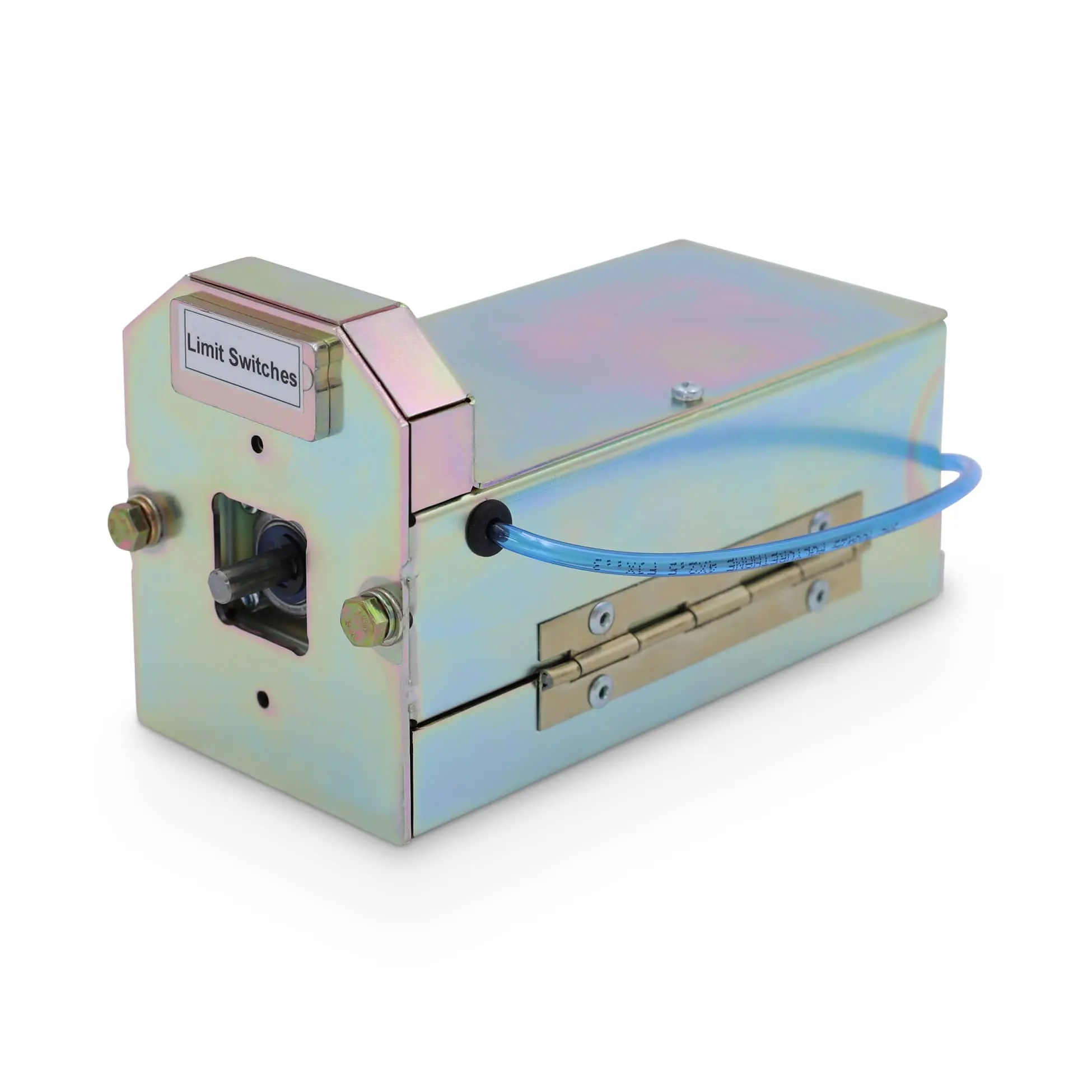
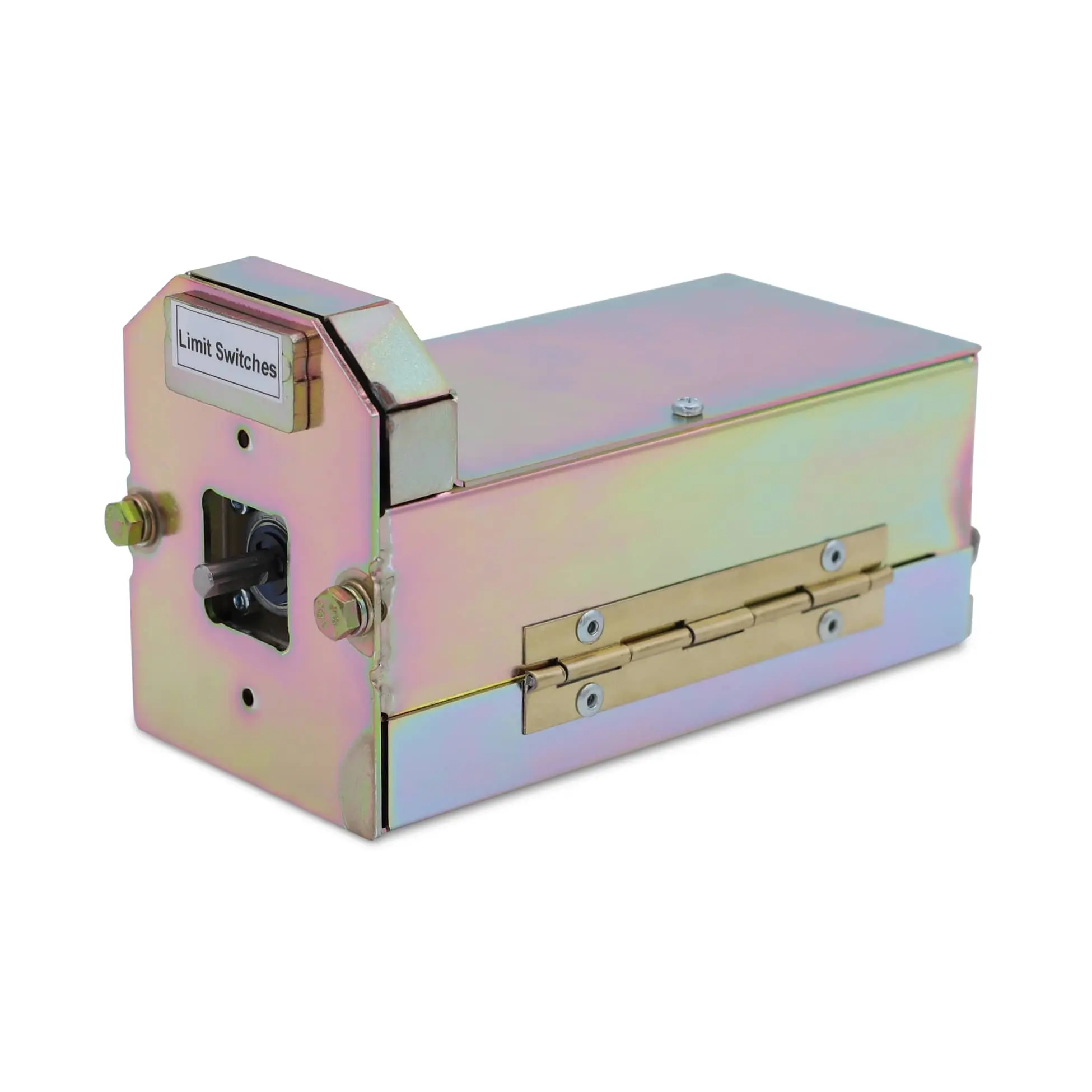



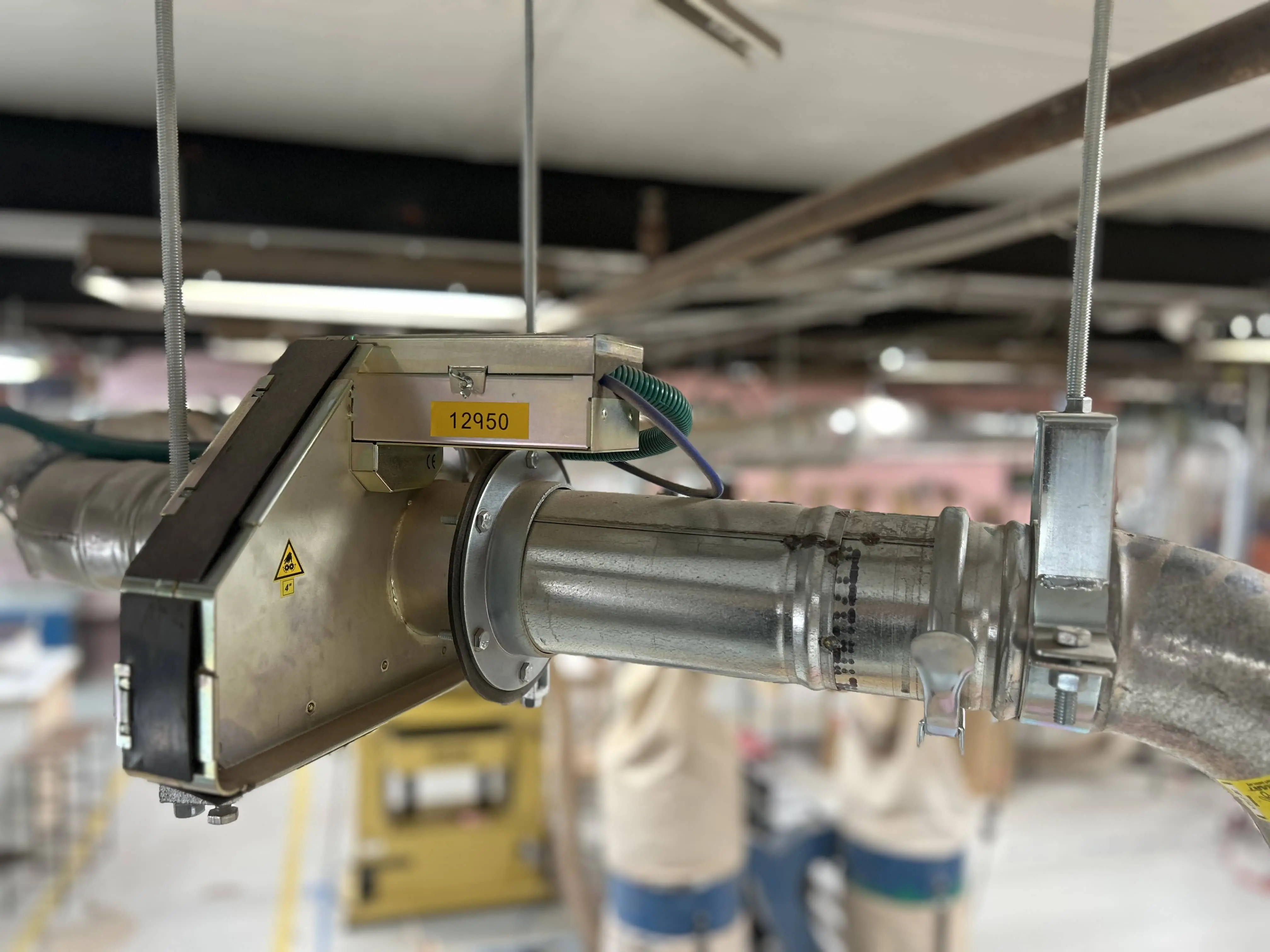
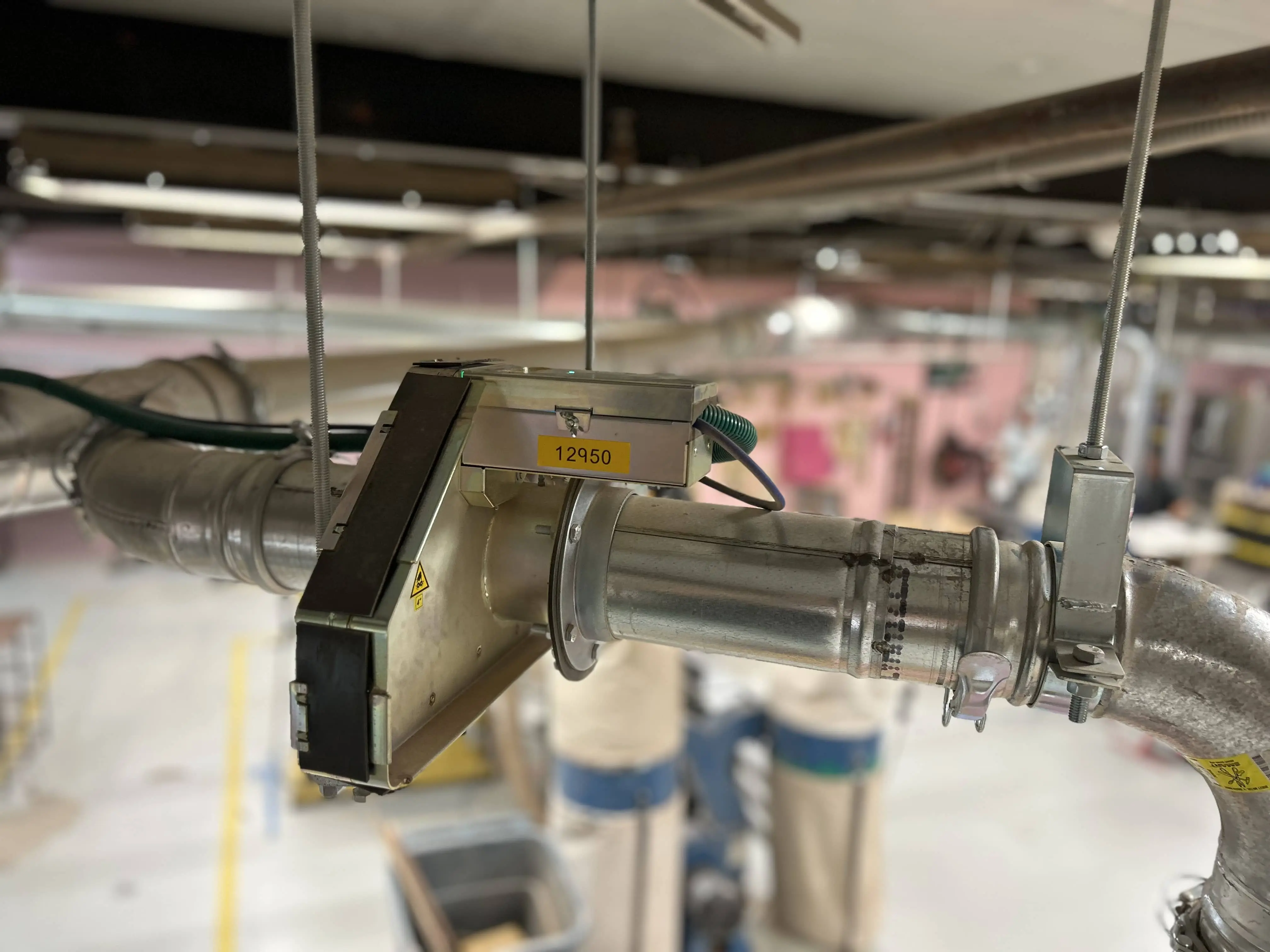

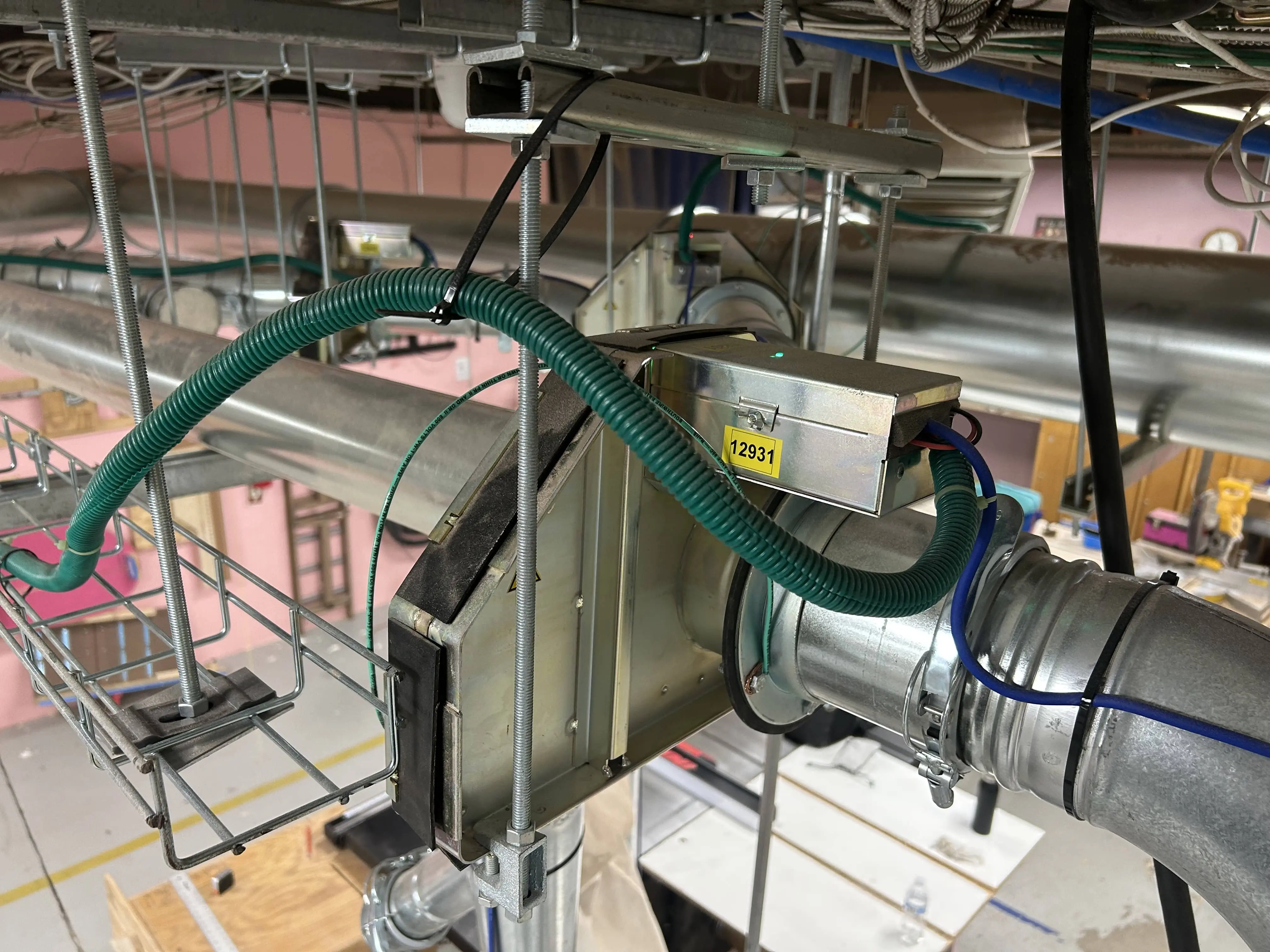
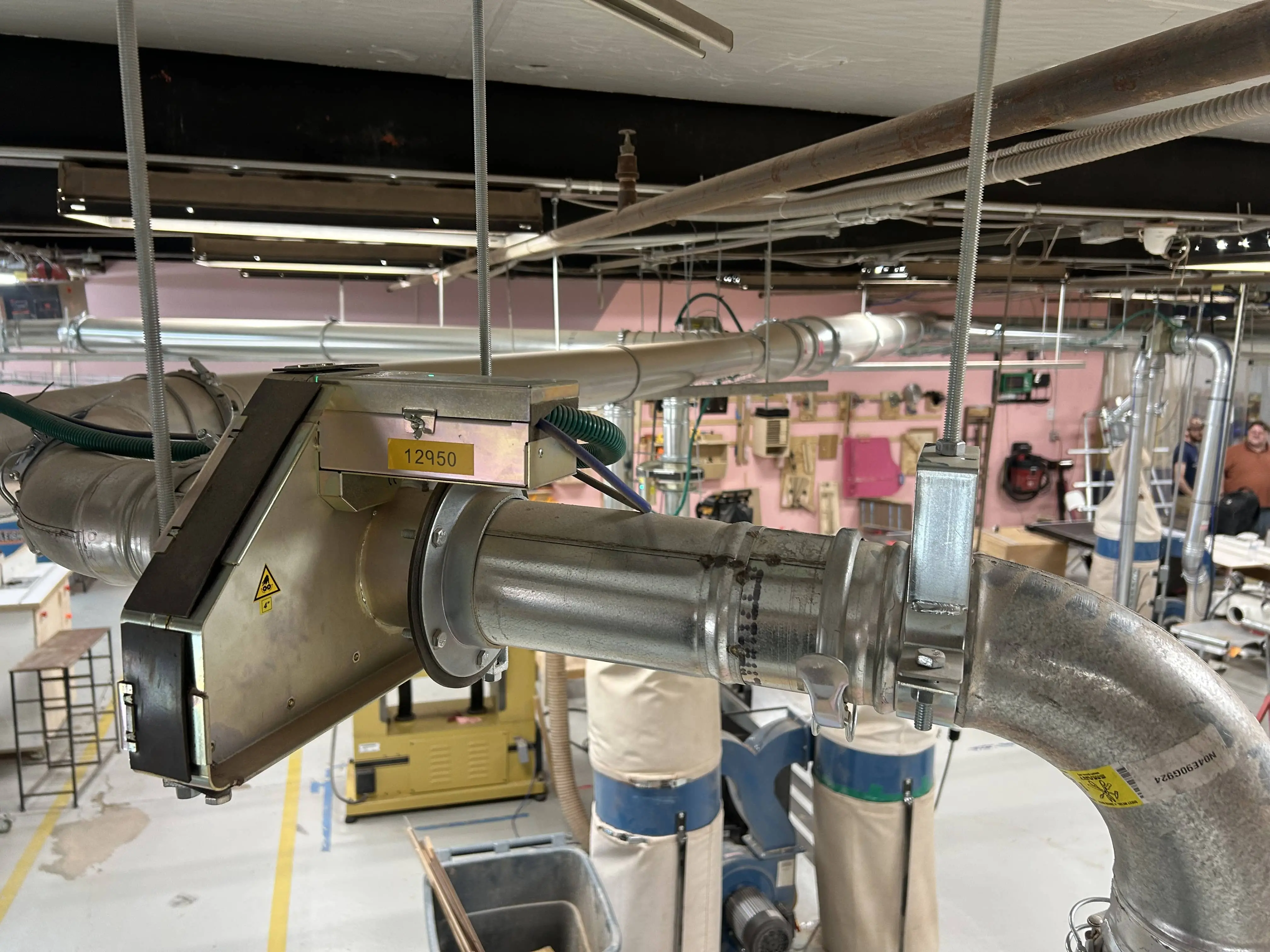


Comments